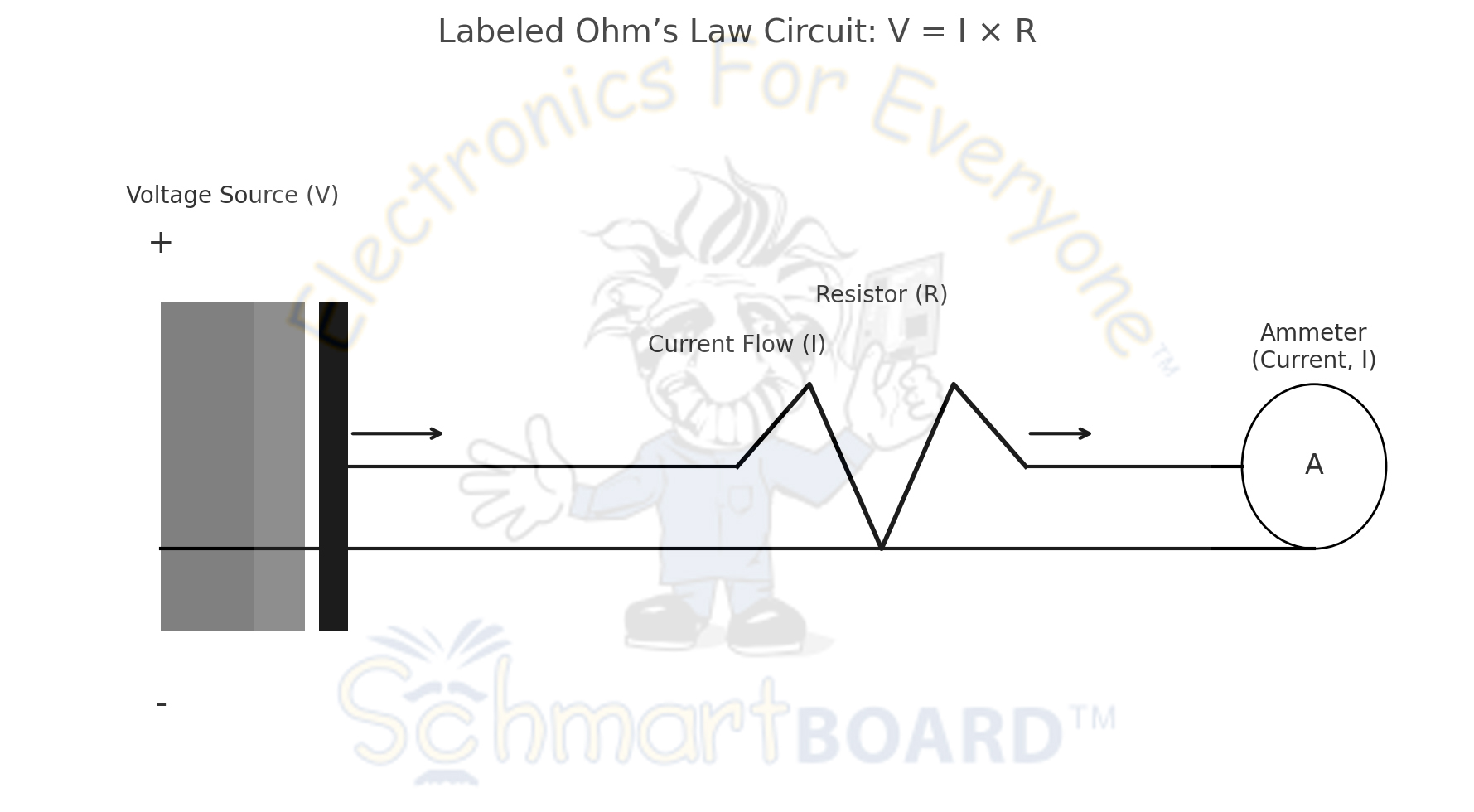 Loading... Please wait...
Loading... Please wait...Categories
Understanding Ohm’s Law and Why It’s Important for Electronics Design
Posted by Schmartboard on May 30th 2025
If you’ve ever dabbled in electronics, chances are you’ve heard of Ohm’s Law. This simple yet powerful equation is the cornerstone of every electrical design, from a basic flashlight to a complex circuit board in a smartphone. Whether you're a beginner or brushing up on fundamentals, understanding Ohm’s Law is critical for building safe, efficient, and functional electronics.
What is Ohm’s Law?
Ohm’s Law defines the relationship between voltage (V), current (I), and resistance (R) in an electrical circuit. It’s expressed with this formula:
V = I × R
Where:
-
V is the voltage in volts (V)
-
I is the current in amperes (A)
-
R is the resistance in ohms (Ω)
This equation helps predict how electricity will behave in a circuit. If you know any two of the values, you can calculate the third.

Here’s the labeled version of the Ohm’s Law Circuit Diagram, showing:
-
Voltage Source (V) from the battery
-
Resistor (R) controlling current flow
-
Ammeter (A) measuring current (I)
-
Arrows indicating current direction
Why Ohm’s Law Matters in Electronics Design
1. Component Selection
Ohm’s Law helps you choose the right components, such as resistors, to protect delicate parts like LEDs or microcontrollers. If too much current flows through a component, it could overheat and fail. Ohm’s Law lets you design your circuit to avoid that.
2. Power Efficiency
Designing for efficiency means avoiding power loss as heat. Ohm’s Law helps engineers calculate voltage drops and current flow, ensuring components aren't drawing more power than necessary.
3. Circuit Debugging
When a circuit isn’t working as expected, Ohm’s Law helps troubleshoot the issue. By measuring voltage and current, you can find faulty components, shorts, or incorrect connections.
4. Voltage Divider Design
Need to supply different voltage levels to different parts of your circuit? Ohm’s Law is at the heart of designing voltage dividers, which split voltage across multiple resistors to create desired values.
5. Safety
Incorrect current or voltage levels can damage components—or worse, cause fire hazards. Ohm’s Law ensures that your designs stay within safe operating ranges.

Practical Example
Let’s say you’re powering a 5V LED that draws 20mA of current, but you only have a 9V power supply. You can use Ohm’s Law to calculate the resistor needed:
-
Voltage drop across the resistor: 9V (supply) - 5V (LED) = 4V
-
Desired current: 20mA = 0.02A
-
R = V / I = 4V / 0.02A = 200Ω resistor
Without Ohm’s Law, choosing this resistor would be a guessing game.
Final Thoughts
Ohm’s Law is not just theory—it’s a daily tool for anyone working with electronics. It enables smarter designs, helps avoid costly mistakes, and forms the foundation for more advanced electrical engineering concepts. If you’re just getting started, master Ohm’s Law—it’s the gateway to confident and capable circuit design.
Recent Posts
- » Do Inspect Solder Joints Under Magnification for Intermittent Issues
- » Don’t Assume Power Supplies Are Perfectly Clean
- » Do Choose the Right PCB Stack-Up Early to Support Signal Integrity
- » Do Route High-Frequency Signals with Controlled Impedance
- » Don’t Overcrowd the Board — Leave Room for Debugging
